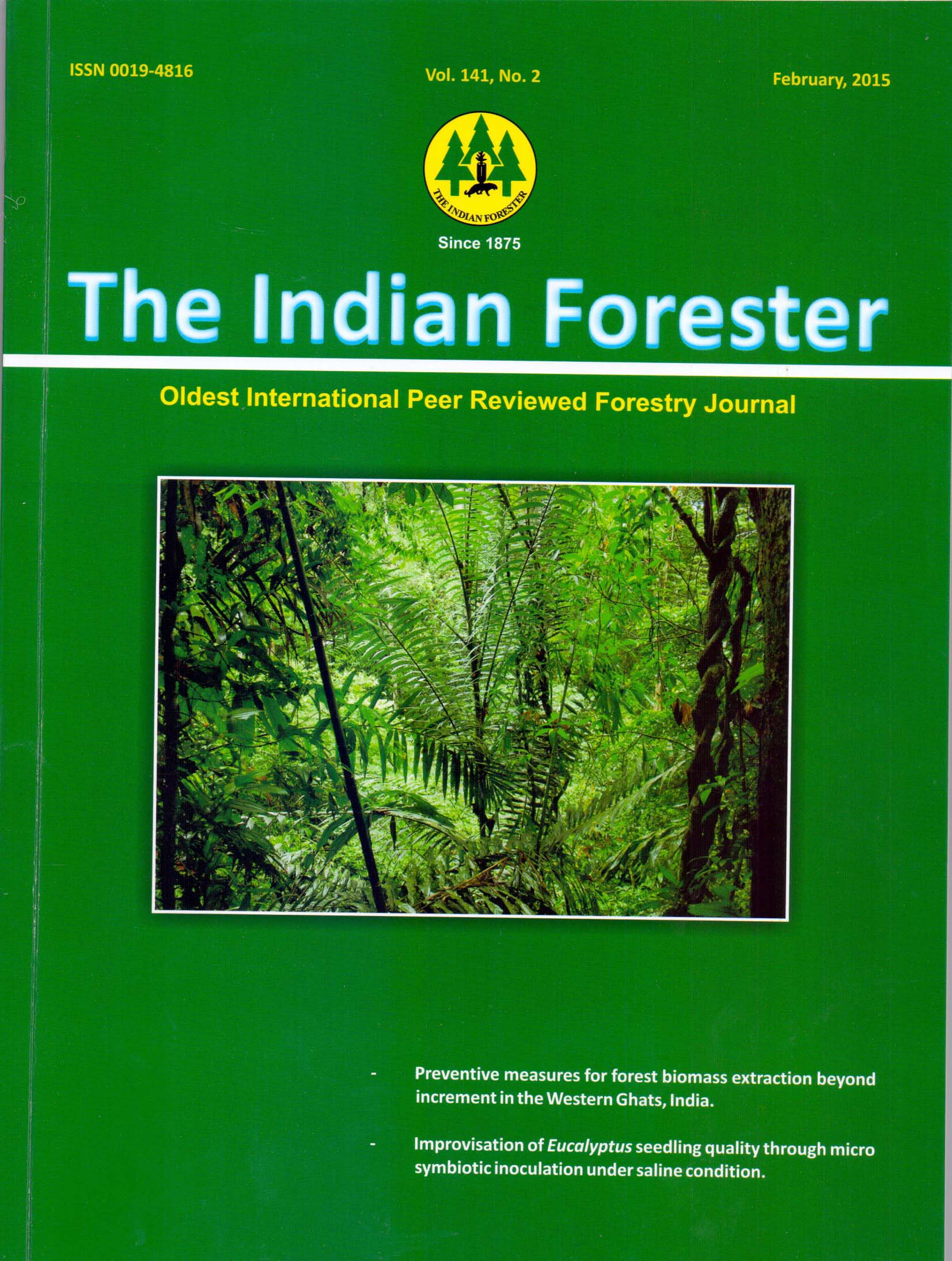Study of Incidence of Stem Canker of Rohida and Its Causal Agent
DOI:
https://doi.org/10.36808/if/2015/v141i2/60695Abstract
No Abstract.References
Anonymous. (1995). Rohira Tecomella undulata, Marwar teak of the thar desert. Issued by Dr. S. Arya. HDRA-ODA Project, Dayanand P.G. College, Hissar (India).
Arya S., Toky O.P., Harris S.M. and Harris P.J.C. (1992). Tecomella undulata, (Rohida): a valuable tree of thar desert. The Int. Tree Crops J., 7:141-147.
Barnett H.L. and Hunter Barry B. (1972). Illustrated genera of imperfect fungi: Third Edition. Burgess Publishing Company, Minnesota.
Bridge John, Kinsey Graham and Livingstone Sharon (2001). Technical protocols for crop disease assessment, plant and soil sampling, isolation and extraction of fungi and nematodes. CABI Bioscience Centre, Ebham, UK.2005
Bunder D.S. and Govil H.N. (1978). Evaluation of fodder tree leaves for sheep and goats in semi arid area of Rajasthan. J. Nuclear Agric. Bio., 7:110-113.
Chen S.F and Morgan D.,(2013). First Report of Lasiodiplodia theobromae associated with stem canker of almond in California. ( Beede R.H. and Michailides T.J. Ed). 97(7): 994.
Dochinger L.S. (1967). Occurrence of poplar cankers cause by Fusarium solani in Iowa. Plant Dis. Reptr., 51:900-903 Gupta G.N. and Bala N. (1992). Tecomella undulata sand dune fixation studies in deserts of India. Ann. Rep. AFRI., 18-19.
Jindal S.K., Kacker N.L. and Solanki K.R. (1987). Germplasm collection and genetic variabilityin Rohida (Tecomella undulata (Sm.) Seem. Indian J. For., 10:52-55
Pandey R.P., Shetty B.V. and Malhotra S.K. (1983). A preliminary census of rare and threatened plants of Rajasthan. In: An assessment of threatened plants of india (edited by S.K. Jain and R. Rao) Bot. Sur. India, Botanical Garden, Howrah, 52-62 pp.
Punithalingam (1976). In: CMI Descriptions of Pathogenic Fungi and Bacteria. (E. Punithalingam Ed.) Page 519 Commonwealth Mycological Institute,Kew, Surrey, UK. 1976.
Taylor R.K., Hale C.N., Hartill W.F.T. (2001). A stem canker disease of olive (Olea europaea) in New Zealand.New Zealand Journal of Crop and Horticultural Science. 29:219-228
Shetty B.V. and Singh V. (1987). Flora of Rajasthan. BSI, Calcutta. Vol. I, pp.164.
Sulaiman R., Thanarajoo S.S., Kadir J. and Vadamalai G. (2012). First Report of Lasiodiplodia theobromae causing stem canker of Jatropha curcas in Malaysia. 6(5): 767.1 .
Verma S.K. and Vir S. (1995). Field insect pest of Rohida (Tecomella undulata) in Arid Zone of Rajasthan. Ann. Arid Zone. 34: 51-55.
Downloads
Downloads
Published
How to Cite
Issue
Section
License
Unless otherwise stated, copyright or similar rights in all materials presented on the site, including graphical images, are owned by Indian Forester.





